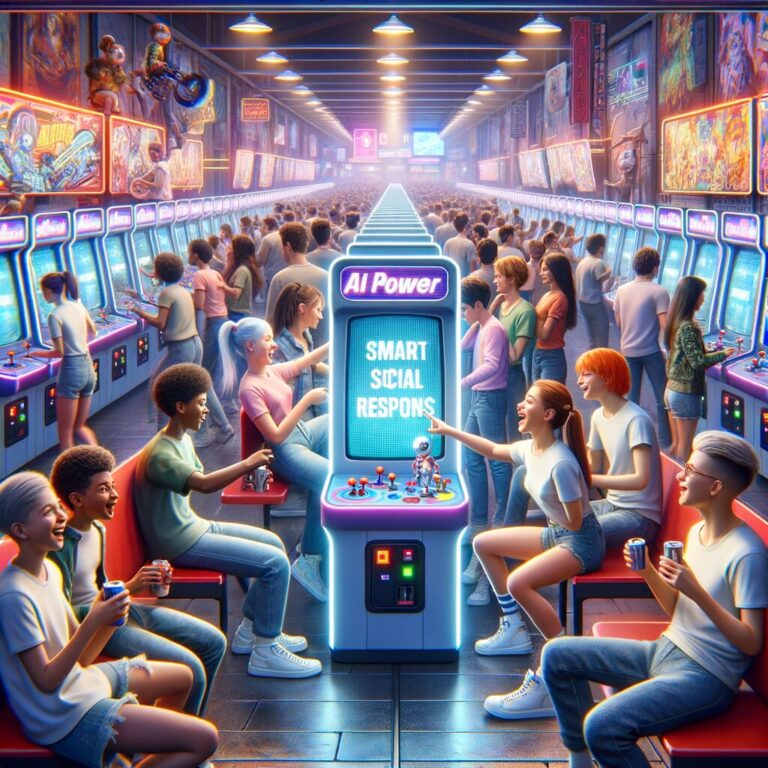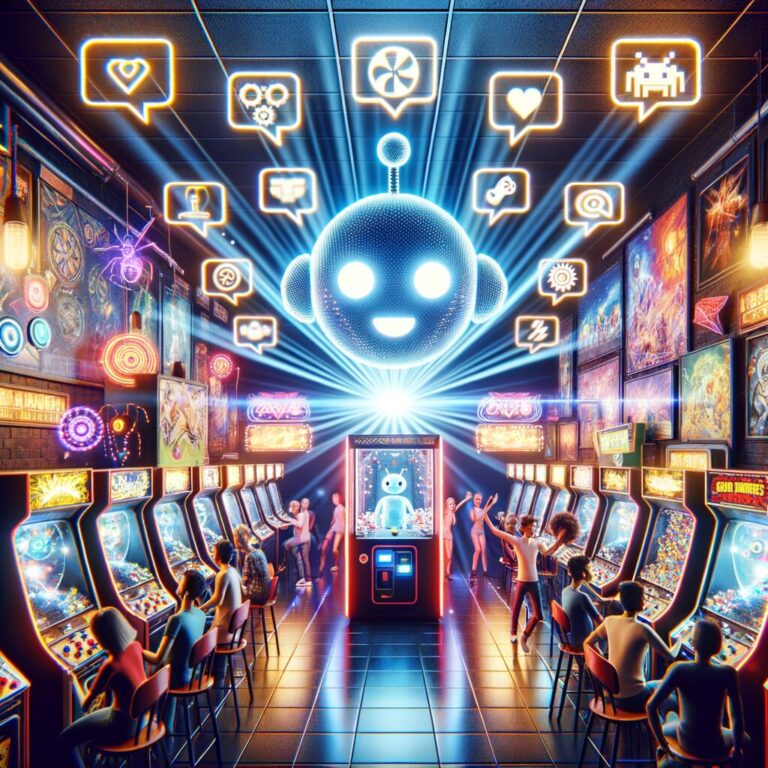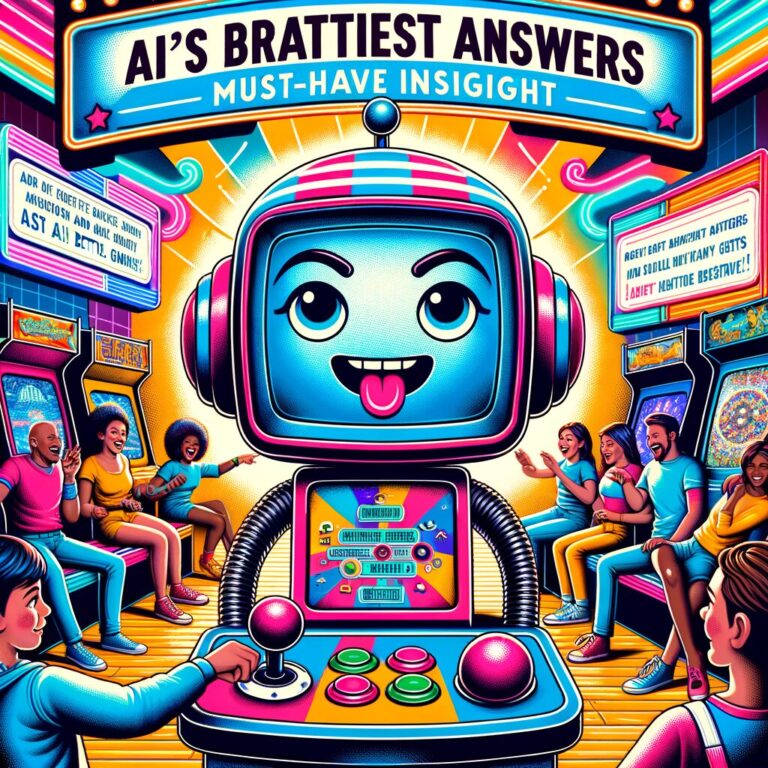Arcade AI: Discover the Stunning Future Lessons from Pac-Man
Arcade AI is revolutionizing how we understand artificial intelligence through the lens of classic games like Pac-Man. The iconic arcade game, cherished by millions since its debut in the early 1980s, has unexpectedly become a powerful tool for exploring advanced AI concepts. By studying how Pac-Man can be played optimally by machines, researchers are uncovering valuable insights into neural networks, reinforcement learning, and game theory, all of which are shaping the future of artificial intelligence.
The Connection Between Pac-Man and Artificial Intelligence

Historically, Pac-Man has been a staple of arcade gaming, known for its simple yet challenging gameplay. However, beneath its familiar surface lies a complex problem that aligns well with AI research. When a machine is tasked with mastering Pac-Man, it must analyze its environment, make strategic decisions, and adapt in real-time—all tasks that mirror real-world AI applications. These challenges make Pac-Man an ideal testing ground for debugging and refining algorithms that could eventually be integrated into autonomous vehicles, robotics, data analysis, and beyond.
Lessons from Pac-Man for Future AI Development
1. Reinforcement Learning and Adaptive Strategies
One of the most pivotal lessons from Pac-Man AI research revolves around reinforcement learning (RL). RL involves training algorithms to make decisions based on feedback from their environment—rewarding good actions and discouraging poor ones. Pac-Man’s unpredictable maze, moving ghosts, and power pellets create a dynamic environment where the AI must constantly adapt strategies to win.
In recent years, reinforcement learning algorithms such as Deep Q-Networks (DQN) have shown promising results by enabling AI agents to learn from scratch and improve over time. Pac-Man serves as a perfect sandbox to observe how these agents develop behaviors like risk-taking, evasion, and strategic planning, lessons that are directly transferrable to real-world applications like self-driving cars or automated trading systems.
2. Neural Networks and Pattern Recognition
Pac-Man also demonstrates the importance of neural networks in pattern recognition. The game’s layout, ghost behaviors, and pellet placements form a complex environment that Grounded AI systems can learn to interpret effectively. Deep learning models trained on gameplay data can recognize patterns, predict ghost movements, and develop sequences of optimal moves.
This has far-reaching implications: for instance, improving robotics’ ability to navigate complicated environments or enabling better fraud detection in financial systems. The way AI systems learn to anticipate ghost movements in Pac-Man informs how they can recognize patterns and predict future states in more complex, real-world scenarios.
3. Transfer Learning and Generalization
A substantial lesson from Pac-Man-based AI research is how models trained on specific tasks can transfer their knowledge to different, unseen situations—known as transfer learning. Early AI models often struggled with generalization, performing well in one environment but poorly elsewhere. However, studies have shown that reinforcement learning agents trained in Pac-Man can, with some adjustments, perform effectively in different maze environments or even other arcade games.
This capacity for generalization is crucial for developing flexible AI systems capable of adapting across multiple domains—they are no longer limited to narrow tasks but can instead learn broad skills applicable in various contexts.
4. Balancing Exploitation and Exploration
Pac-Man AI also teaches us about balancing exploitation (using known strategies) and exploration (trying new options). An effective AI agent must sometimes risk moving into uncertain territory to uncover better strategies, mirroring real-world decision-making processes. Understanding how to manage this balance enhances AI’s efficiency and robustness.
The Future of AI Inspired by Classic Arcade Games
The lessons learned from Pac-Man and similar arcade games are guiding the development of more sophisticated AI architectures. As researchers refine reinforcement learning algorithms and neural network models, the goal is to create systems that can learn more quickly, adapt better to novel environments, and exhibit human-like reasoning.
Moreover, the simplicity of games like Pac-Man allows researchers to test hypotheses cost-effectively, accelerating AI development. As these models mature, they can be scaled and integrated into complex real-world systems, from autonomous vehicles navigating bustling city streets to intelligent personal assistants handling diverse user needs.
Conclusion
Arcade AI, exemplified by lessons from Pac-Man, demonstrates the enduring relevance of classic games in shaping future technological advancements. By leveraging the game’s rich, dynamic environment, researchers are uncovering key insights into reinforcement learning, neural networks, pattern recognition, and adaptation. These lessons pave the way for smarter, more flexible AI systems capable of tackling real-world challenges with sophistication and agility.
The next time you see an AI successfully navigating a maze or making strategic decisions, remember that the roots of this intelligence may well trace back to the humble pixels of Pac-Man. As arcade AI continues to evolve, so too will our understanding of intelligence itself—blurring the lines between gaming nostalgia and groundbreaking innovation.






